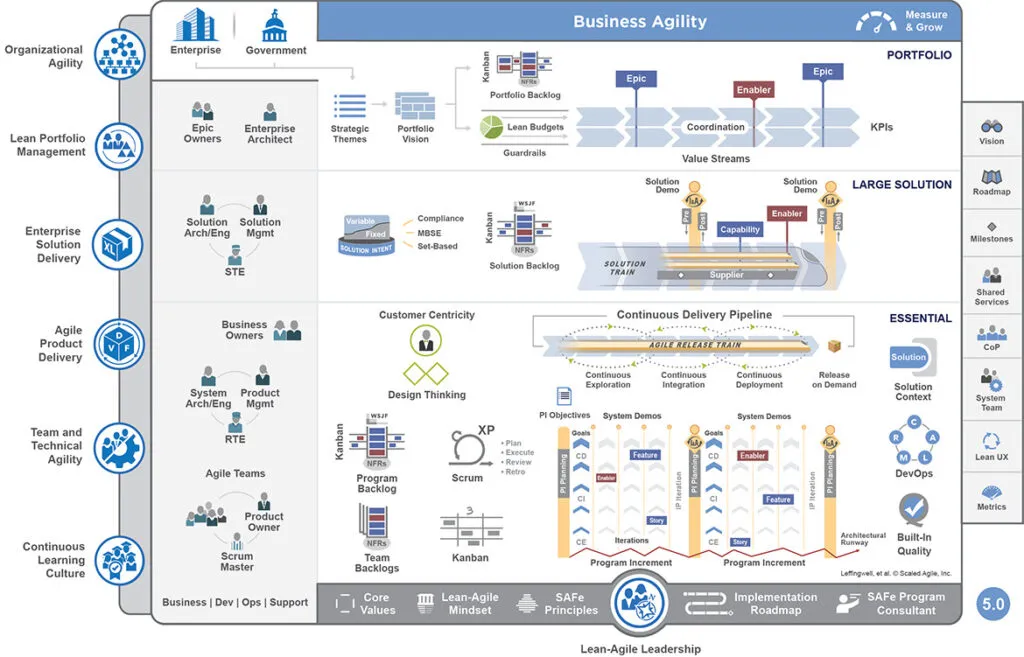Be less frAgile
I've seen countless so-called "Agile" implementations, but a manifesto which once stood in rebellion of rigid, bureaucratic engineering processes has, sadly, too often become another piece of corporate theatre. Agile is supposed to free teams from excessive structure and documentation, allowing you to focus on the only thing that matters: delivering working software.
Traditional engineering is slow and methodical — understandably so. You don’t get a second chance at building a bridge. Software, however, is different. Unlike physical infrastructure, software can be iterated on rapidly. The Agile Manifesto was built on this realisation: that software development benefits from adaptability and continuous improvement.
Frameworks like SAFe and an obsession JIRA have turned Agile into a corporate machine that often misses the point entirely. Let's take a step back and look at how we've lost our way by revisiting the four core tenets of the Agile Manifesto.

What in the name of corporate hell is going on here?
Individuals and Interactions
....over processes and tools
Agile is not about JIRA workflows, sprint velocity charts, or stand-ups that feel more akin to interrogations. It is supposed to put people first - real human beings, solving real problems through collaboration and conversation. In many organisations, developers can spend more time updating tickets and in various sprint ceremonies than writing code. Teams are shackled by rigid processes that do little to foster real innovation.
If your "Agile" process is creating barriers and generating processes rather than removing them, you’re doing it wrong.
Working Software
....over comprehensive documentation
Documentation has its place, but Agile shifts the focus to delivering value, not filling out Confluence pages. Instead, many teams are bogged down with excessive reporting, detailed specifications that become obsolete before they're implemented, and processes that favour paper trails over progress. The best documentation? Clean, well organised code - not a monolithic document.
If you’re spending more time justifying your work than delivering it, something’s gone wrong.
Customer Collaboration
....over contract negotiation
Agile encourages tight feedback loops with customers — not just at the start of a project but continuously. Too often, though, teams still treat requirements as static contracts, only engaging with stakeholders at predefined intervals (or worse, not at all). SAFe and other enterprise frameworks often reinforce this by introducing layers of bureaucracy between developers and the end users. Agile was supposed to bring us closer to customers, not introduce more middle management.
If your "customer collaboration" is limited to quarterly planning sessions, you're probably missing the point.
Responding to Change
...over following a plan
The digital world moves fast, and Agile intends for us to move with it. However, some treat sprint backlogs as sacred, refusing to pivot even when it's clear that priorities have shifted. Others implement Agile methodologies so rigidly that they resemble old-school waterfall planning in disguise. Agile isn’t about following a script — it’s about embracing change and adapting.
If your team feels like it has to ask permission to adjust course, you’re not being Agile; you're just using different terminology for the same old problems.
What Now?
The core takeaway here is Agile does not dictate, it is a set of principles not a recipe, there are no accepted norms for process - SAFe isn't agile, Scrum isn't agile, JIRA isn't agile and "daily interrogations" certainly aren't agile either.
The sole objective of the Agile manifesto is to foster the production of working software. If your team is burdened by process rather than empowered by it in meeting this end, it would be wise to strip things back. Here’s where to start:
- Cut the bureaucracy – Challenge unnecessary meetings, approvals, and rigid frameworks that slow you down.
- Empower teams – Give developers more autonomy to solve problems without excessive oversight.
- Talk more, document less – Prioritise real-time conversations over excessive documentation.
- Get closer to your customers – Engage with them frequently (through real conversations), gather feedback, and iterate quickly.
- Embrace flexibility – Allow priorities to shift based on new information rather than clinging to outdated plans.
Agile works best when it’s simple and human-focused. Everything else is just noise.